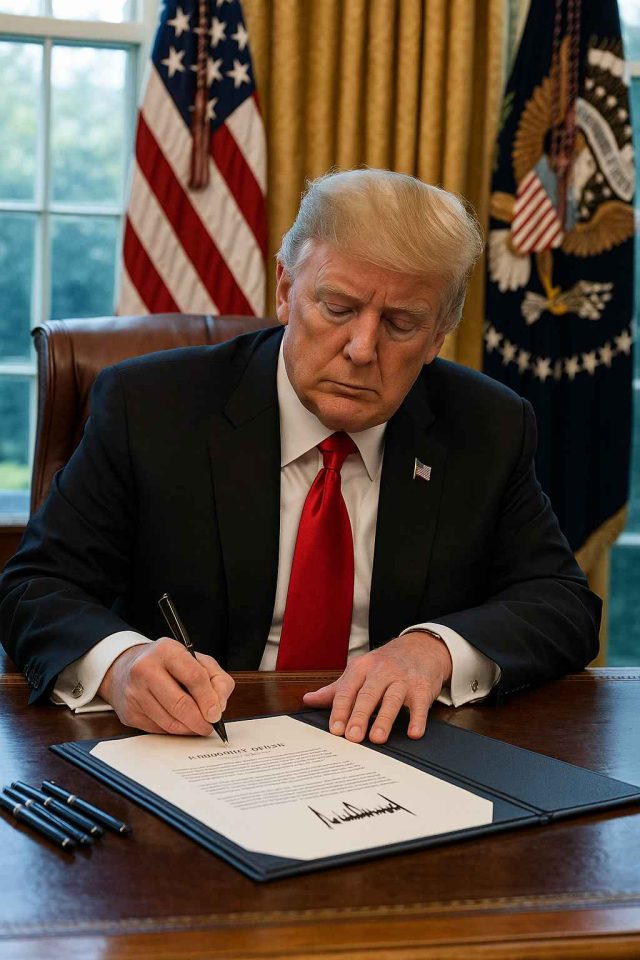Imagine a marketplace where U.S. drug prices align with those in countries like Canada or the UK. On May 12, 2025, President Donald Trump signed an executive order aiming to make this a reality. This move seeks to reduce prescription drug costs by up to 80%, introducing significant changes to the pharmaceutical landscape. For marketers, this shift necessitates a reevaluation of strategies to navigate the evolving terrain.
Table of Contents
- Overview of the Executive Order
- Implications for U.S. Drug Prices
- Strategic Adjustments for Pharma Marketers
- Anticipated Challenges and Considerations
Overview of the Executive Order
President Trump’s executive order introduces a “most favored nation” pricing model, mandating that U.S. drug prices match the lowest prices available in other developed countries. This policy aims to address the longstanding issue of Americans paying significantly more for medications compared to their international counterparts.
Key components of the order include:
- Price Alignment: Pharmaceutical companies are required to adjust U.S. drug prices to match those in countries with the lowest rates for the same medications.
- Direct-to-Consumer Sales: The order encourages manufacturers to offer drugs directly to consumers at these adjusted prices, bypassing traditional intermediaries.
- Regulatory Measures: Should companies fail to comply, the administration may impose tariffs or other regulatory actions to enforce the policy.
This initiative builds upon previous efforts to lower drug costs and represents a significant shift in the U.S. approach to pharmaceutical pricing.
Implications for U.S. Drug Prices
The executive order’s primary objective is to reduce the financial burden of prescription drugs on American consumers. By aligning prices with those in other nations, the administration anticipates substantial savings for patients and the healthcare system.
Potential outcomes include:
- Cost Reductions: Patients may experience significant decreases in out-of-pocket expenses for medications, improving access and adherence.
- Market Disruption: Pharmaceutical companies may need to reassess pricing strategies globally to maintain profitability while complying with the new U.S. regulations.
- Innovation Impact: Critics argue that reduced revenues could hinder research and development efforts, potentially slowing the introduction of new therapies.
The policy’s success hinges on effective implementation and the industry’s response to these sweeping changes. Some industry insiders question if this will force Pharma companies to raise prices globally and what will be the impact of drug access in less developed Nations.
Strategic Adjustments for Pharma Marketers
The new pricing landscape necessitates a strategic pivot for pharmaceutical marketers. Emphasizing value, transparency, and patient-centric approaches will be crucial in maintaining market share and brand loyalty.
Key strategies include:
- Value Communication: Clearly articulate the clinical and economic benefits of medications to justify pricing and differentiate products in a more cost-sensitive market. Trust digital advertising strategists to deliver your message to the marketplace.
- Patient Engagement: Develop educational campaigns that inform patients about pricing changes, access programs, and the value proposition of treatments.
- Digital Transformation: Leverage digital platforms to disseminate information efficiently, personalize messaging, and gather real-time feedback to adapt strategies promptly.
- Stakeholder Collaboration: Work closely with healthcare providers, payers, and policymakers to align messaging and ensure cohesive communication across the healthcare ecosystem.
Adapting to these strategies will help companies navigate the new environment effectively.
Anticipated Challenges and Considerations
While the executive order aims to benefit consumers, it presents several challenges for the pharmaceutical industry:
- Regulatory Compliance: Ensuring adherence to the new pricing regulations requires significant operational adjustments and may involve complex negotiations with international markets.
- Revenue Management: Companies must balance the need to comply with pricing mandates while sustaining profitability, potentially leading to cost-cutting measures or portfolio reevaluation.
- Market Dynamics: The shift may alter competitive dynamics, with companies that adapt quickly gaining an advantage over slower-moving competitors.
- Legal and Political Risks: The policy could face legal challenges or changes with future administrations, introducing uncertainty into long-term strategic planning.
Proactively addressing these challenges will be essential for companies to thrive under the new policy framework.
FAQs
What is the main goal of the executive order on drug pricing?
To reduce U.S. prescription drug prices by aligning them with the lowest prices available in other developed countries.
How might this policy affect pharmaceutical companies?
Companies may experience reduced revenues in the U.S., prompting strategic adjustments in pricing, operations, and investment in research and development.
Will patients see immediate benefits from this policy?
While the policy aims for rapid implementation, the timeline for patients to experience cost reductions will depend on how quickly companies adjust prices and regulatory processes unfold.
Could this policy impact drug innovation?
Potentially, as reduced revenues might limit funds available for research and development, possibly slowing the introduction of new therapies.
Are there risks associated with this executive order?
Yes, including legal challenges, operational complexities, and potential negative impacts on innovation and global pricing strategies.
For more Pharma News visit our article section of the website.
Disclaimer:
This content is not medical advice. For any health issues, always consult a healthcare professional. In an emergency, call 911 or your local emergency services.
